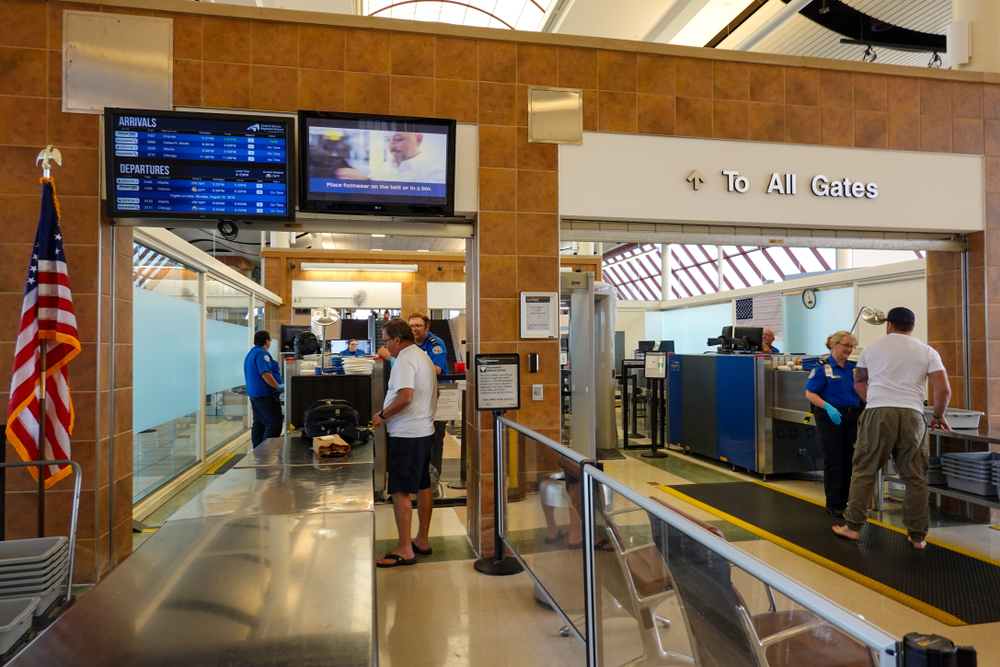Is the Airline Industry on the Verge of Recovery? Data Says It’s Unlikely.

Although the TSA reported their first increase of screened passengers in weeks, global data from the aviation industry suggests that a recovery may still be months – if not years – away. While Europe and the Asia-Pacific regions are showing slow signs for resurgence, the Americas continue to struggle.
While Wall Street is celebrating the first screened passenger increase in two weeks, new data suggests that the aviation industry may still be years away from a full recovery. The analysis shows that as the COVID-19 pandemic continues to be problematic in the Americas, seat capacity and routes are not necessarily growing accordingly.
TSA Daily Turnstile Increases, While Scheduled Weekly Capacity Flattens
One of the key indicators that aviation could slowly begin an upturn came from the Transportation Security Administration checkpoint travel numbers report. The numbers shows during the week ending Aug. 1, 2020, screened passenger count showed noted increases, especially towards the weekend. The best date came on Saturday, Aug. 1, when passenger screening was up by 9.2 percent.

A visual analysis of Transportation Security Administration Data over three weeks ending Aug. 1, 2020. Chart courtesy: STR
However, a look at global numbers show that overall, demand is still flat in most of the world. An analysis by Routes Online shows that airlines have still removed over half of their capacity compared to the same time in 2019. As of July 27, 2020, carriers made over 57 million seats available. That number is low, in contrast to the year-over-year figure of over 119 million available seats globally.
Moreover, when looked at on a regional level, the Americas are lagging behind the rest of the world in scheduled weekly capacity. The Asia-Pacific region lead the world in available seat capacity, with over 26 million seats available as of the week ending July 27. Europe had the second-highest capacity, with 13 million seats available. North America came in third, with availability of 12 over 12 million seats. The analysts credit Europe opening borders within the trade bloc, while the Americas experienced the slowest growth.
“Europe has emerged as the key growth region thanks to the easing of travel restrictions and resumption of service in July by several large carriers, including Ryanair and easyJet,” the analysis by Routes Online reads. “However…the speed of growth in other regions has been slower. After large capacity gains in June, North America recorded the lowest growth between July 6 and Aug. 3—of 7.2 percent—while fewer than 400,000 departure seats were added in Latin America over the same period.”
Route Analysis Aligns with International Projections
Although capacity among carriers is growing, it may not be enough to prevent a long-term slump in the aviation industry. According to the latest numbers from the Johns Hopkins University & Medicine Coronavirus Resource Center, the United States continues to lead the world in confirmed COVID-19 cases, with over 4.7 million.
Until that curve can be flattened, experts agree that the aviation industry cannot recover. Union leaders have called on Congress to do more to control the novel Coronarvirus outbreak, while the International Air Transport Association warns commercial aviation may not return to 2019 rates for years.























There will be no V-shaped recovery as long as flying is a stripped-down, masked-up dystopia.
Vietguy you are so right besides being the worst thing to do is keeping feeding the "pig" look at what the cost is to taxpayers this bill will be around a long time our grandkids will still be paying this mess off. The airlines need to shrink that is a fact period and in doing so its need to services and staff will shrink proportionally. Thats just a fact of life.
Joe there is a lot of false optimism out there and not saying we don't need a little good news these days but you, I and most of your readers out there know that this will be a load road to "recovery" whatever that will look like. Facts are older less efficient planes have been grounded or about to. Gone for the most part are the 380's with showers ( will miss that after 16 hours in the air) bars in the back of the upper decks, efficiency apartments in the air. What we will get are cleaner more efficient airplanes, air exchangers equal to hospitals and last but not least prepackage meals oh yum. So tell me who is lining up to take a 12/15 long haul flight with tv dinners mask on except for drinking or eating limited hard drinks/wine? Half the fun of a long haul trip is the flights. Having said that after cancelling two trips to Europe I am now looking at next summer hoping, however am a bit concerning because who really knows what those schedules will look like.,
This US gov’t is going to give US airlines another $25 billion bailout so they don’t do layoffs. IMO is a total waste of taxpayers money. The demand is not there for airlines to support the thousands of workers. So the gov’t is going to supplement the airlines paying thousands of workers to not work until Mar. 31, 2021. Then what? Another round of billions of dollars of taxpayers’ money for airline employees to not work? Demand is not going to rebound for years. Airlines have said they have enough money until at least summer 2021. After they deplete their cash on hand then reassess the situation for a bailout with loans or equity for the taxpayers.